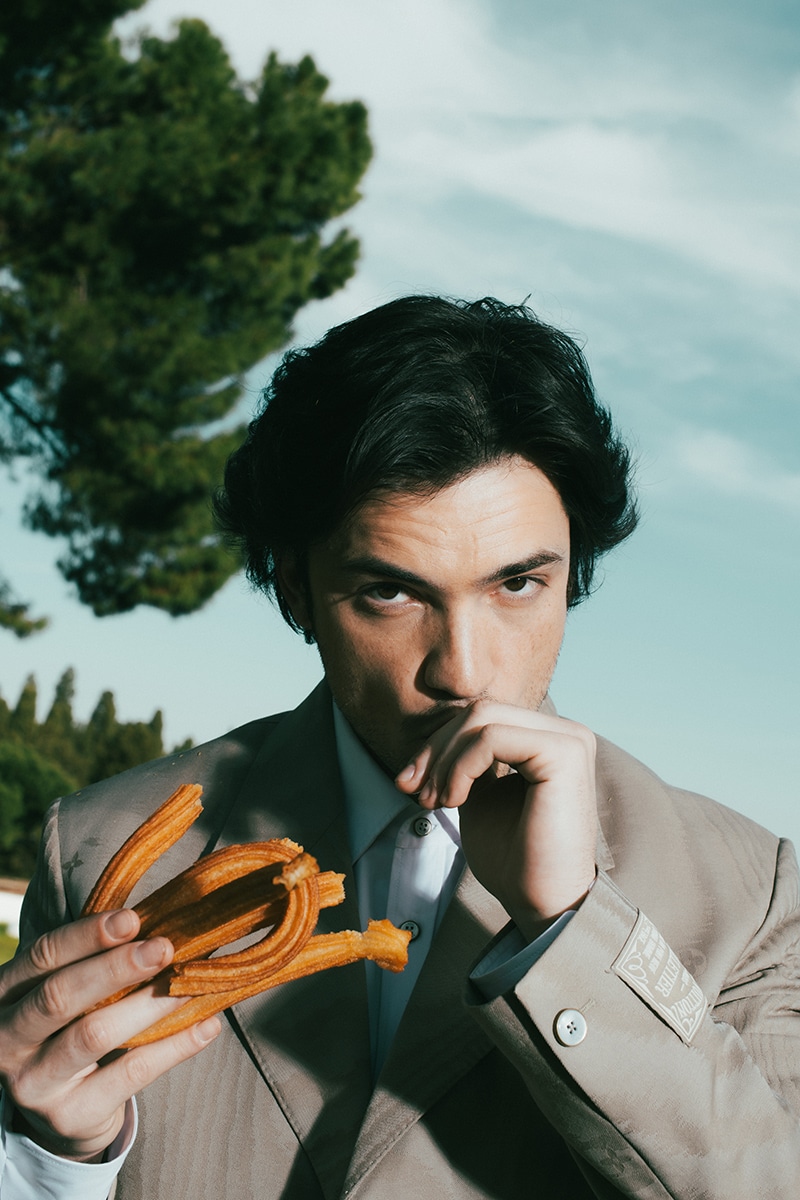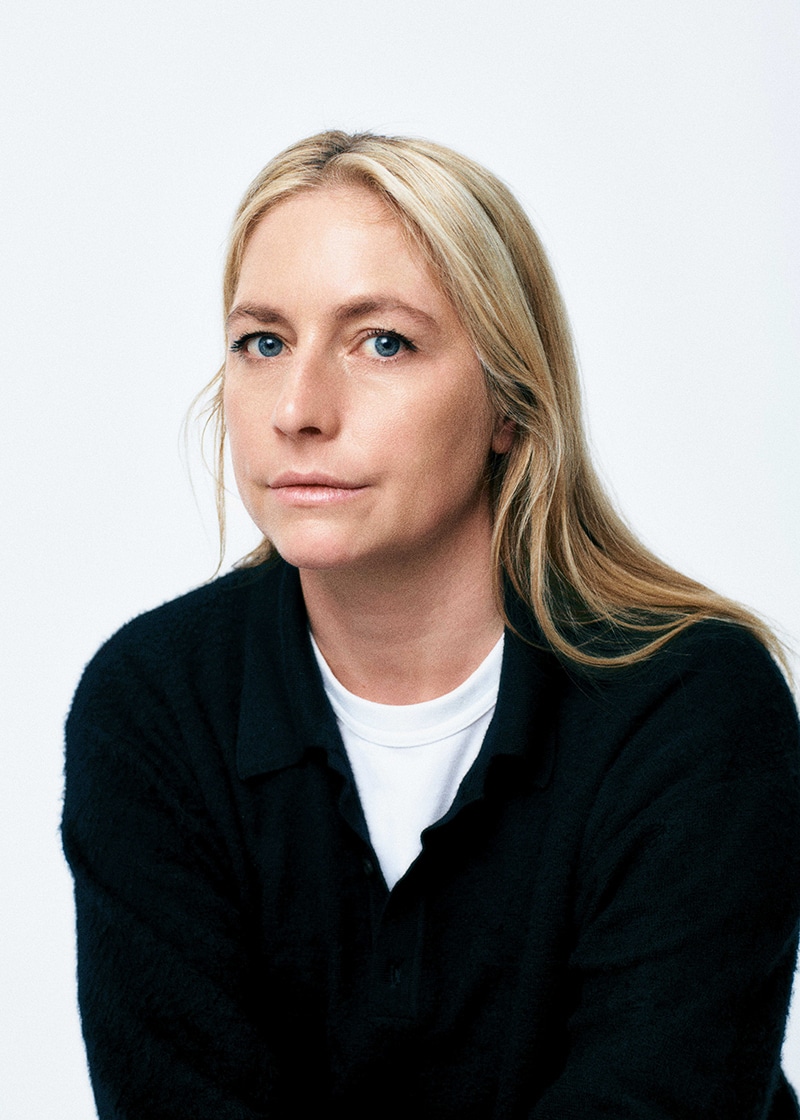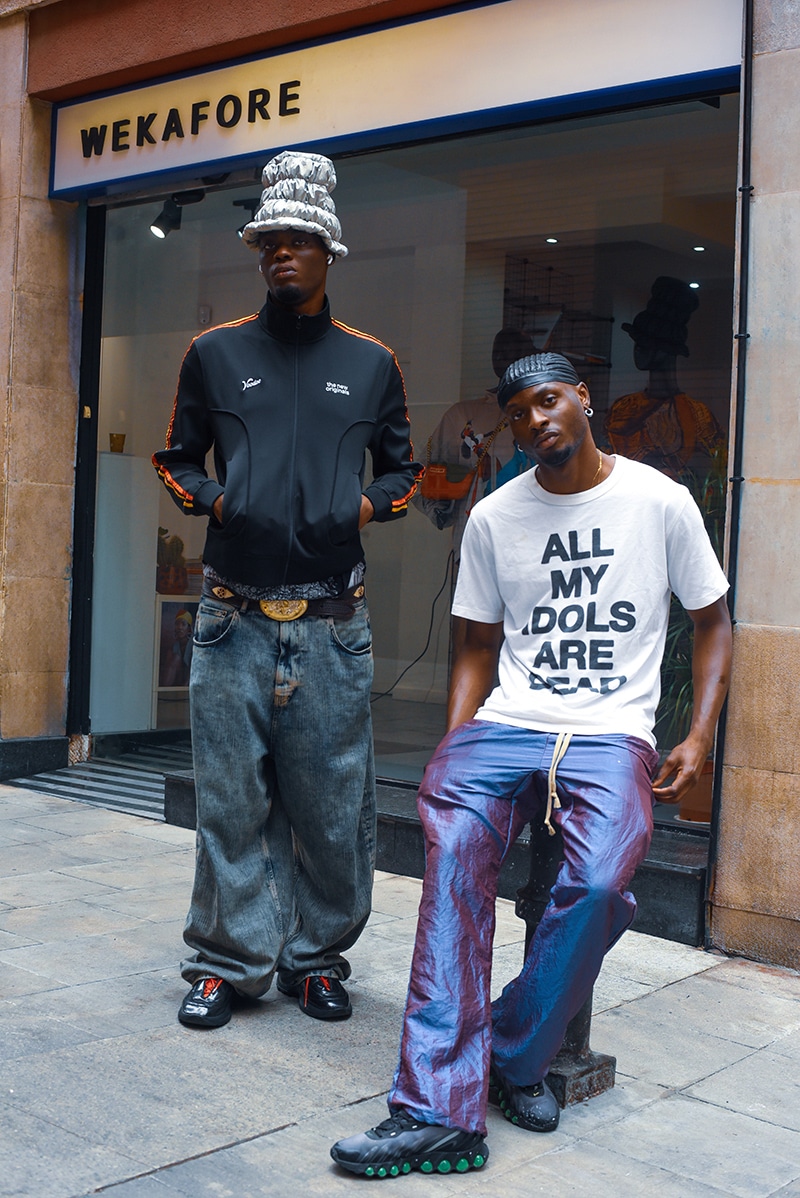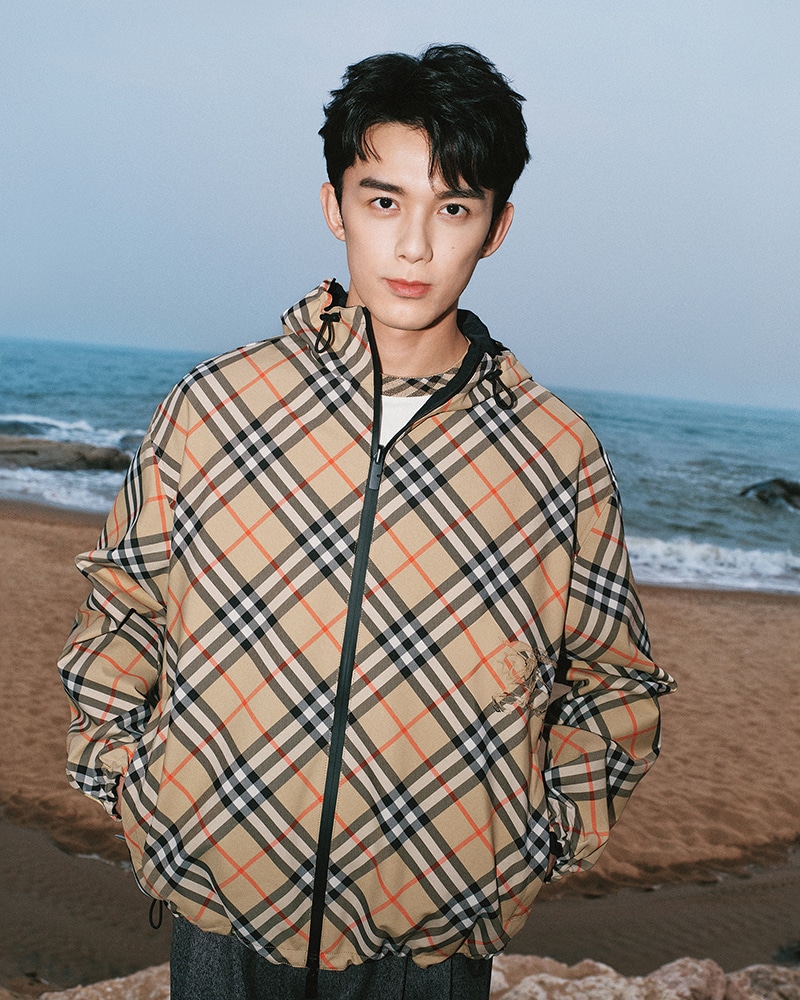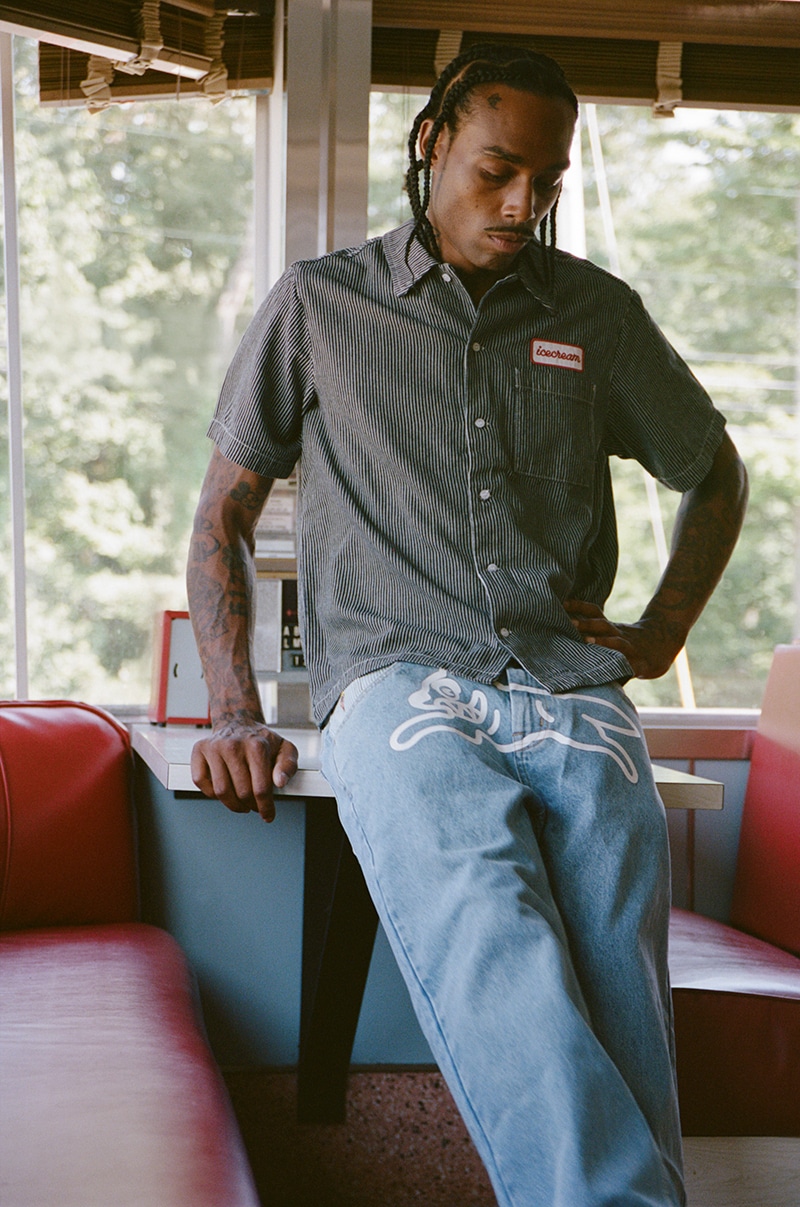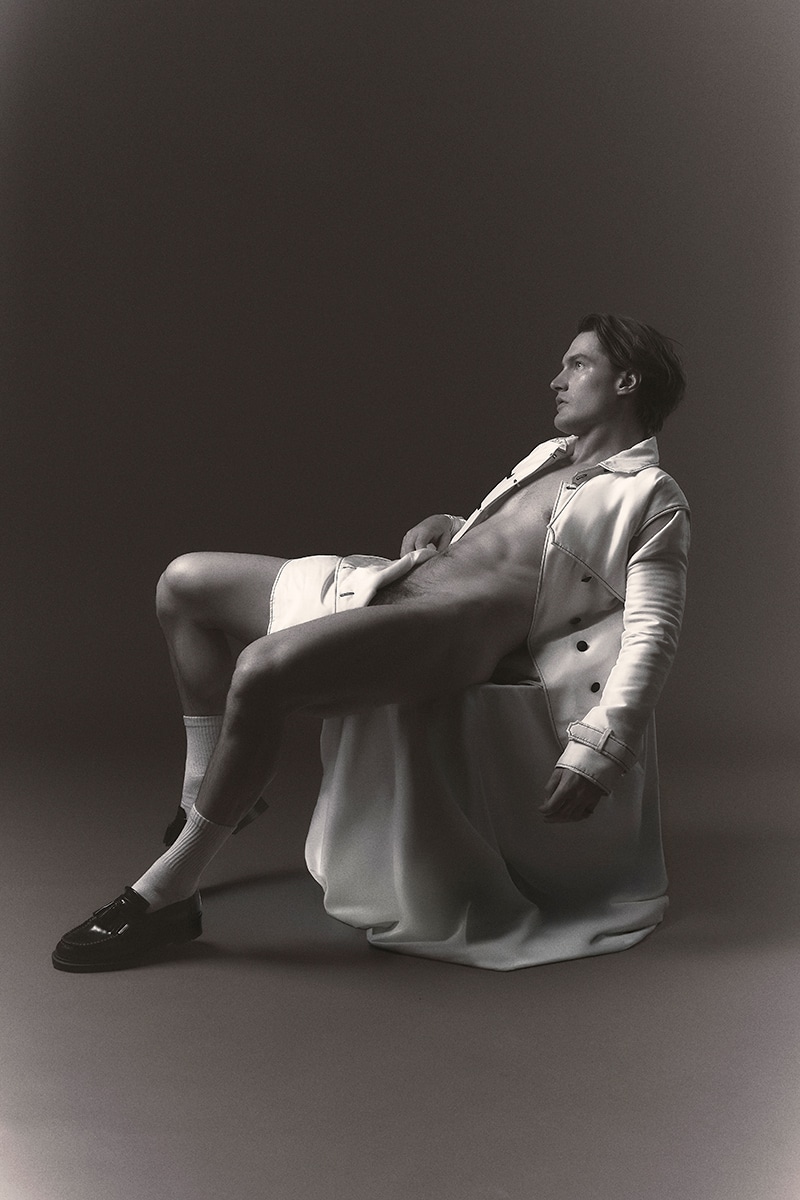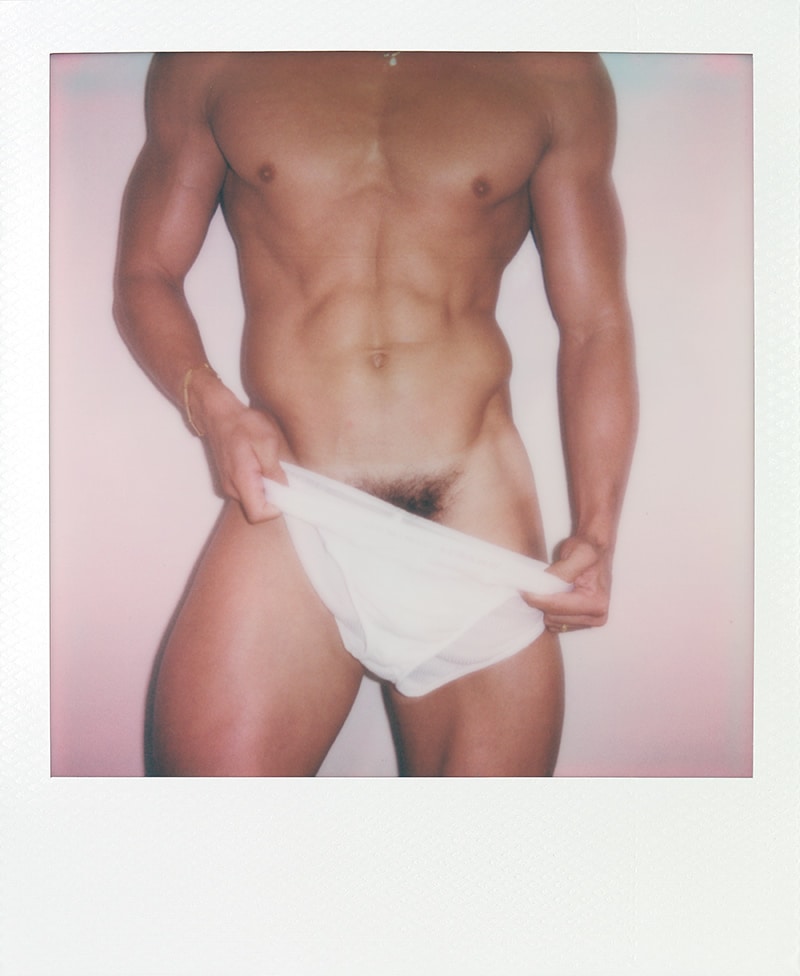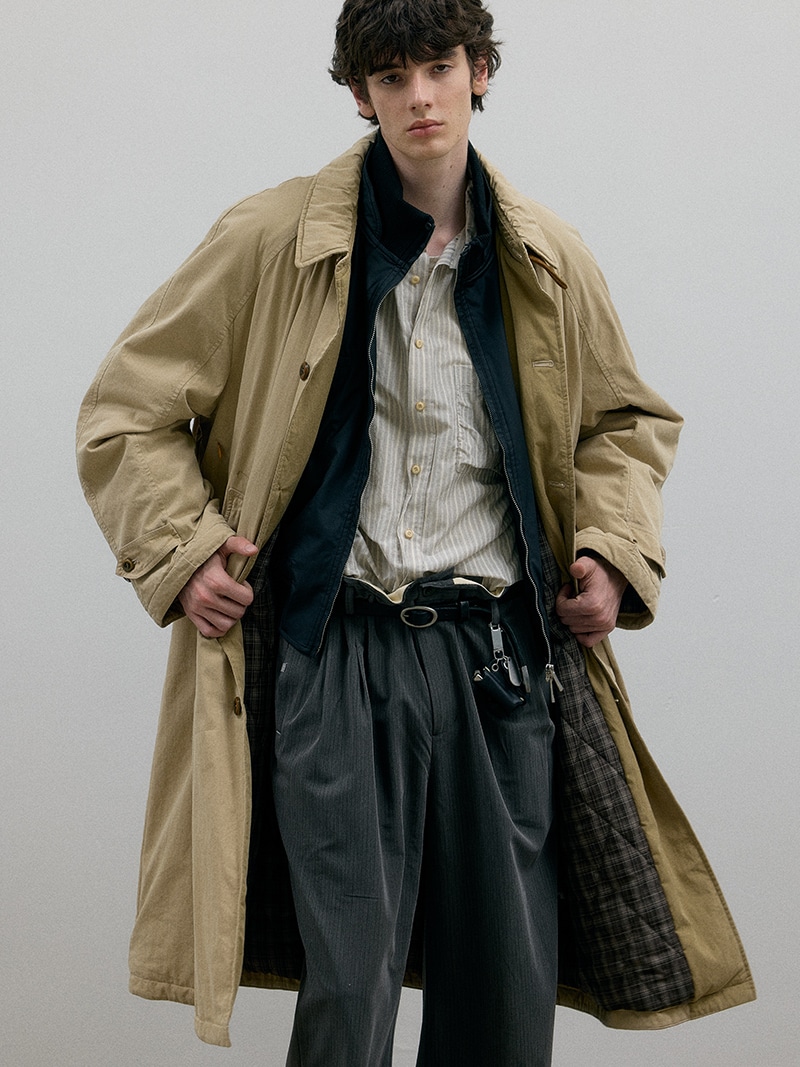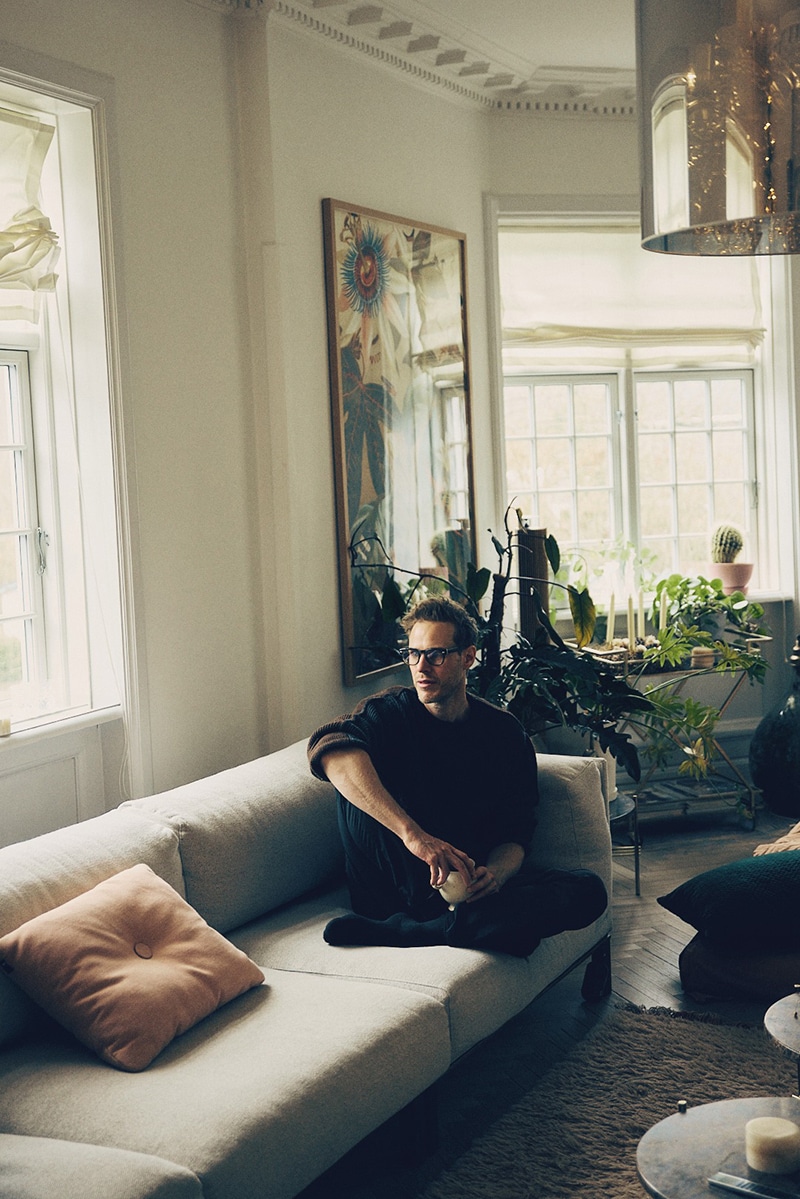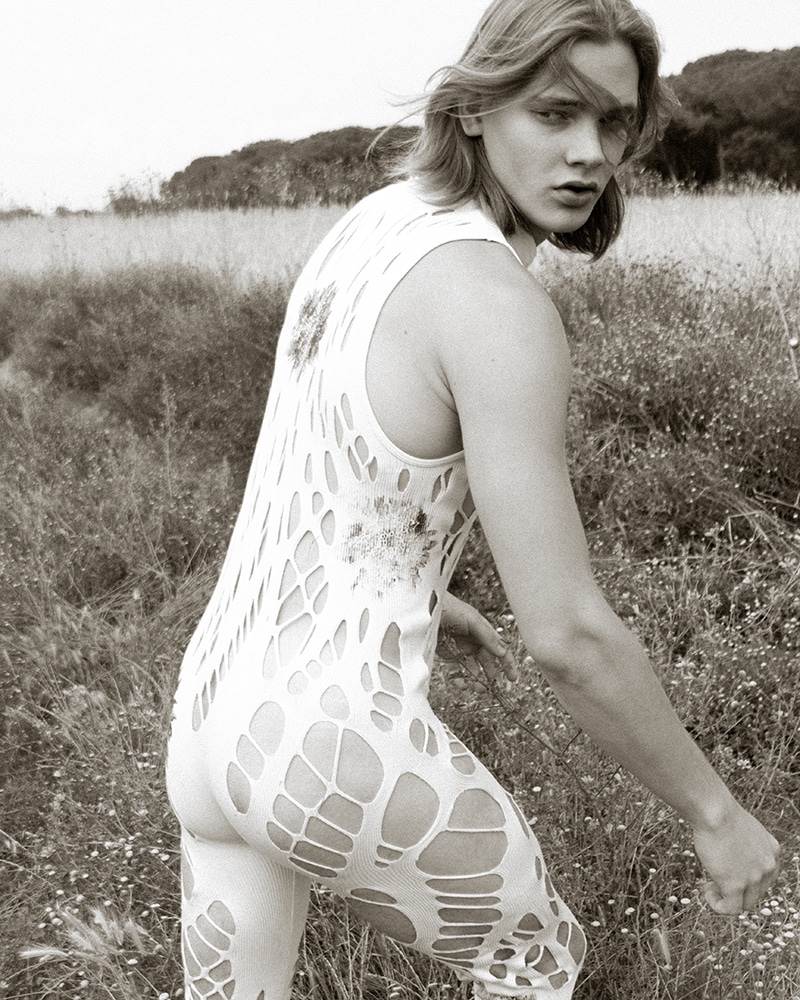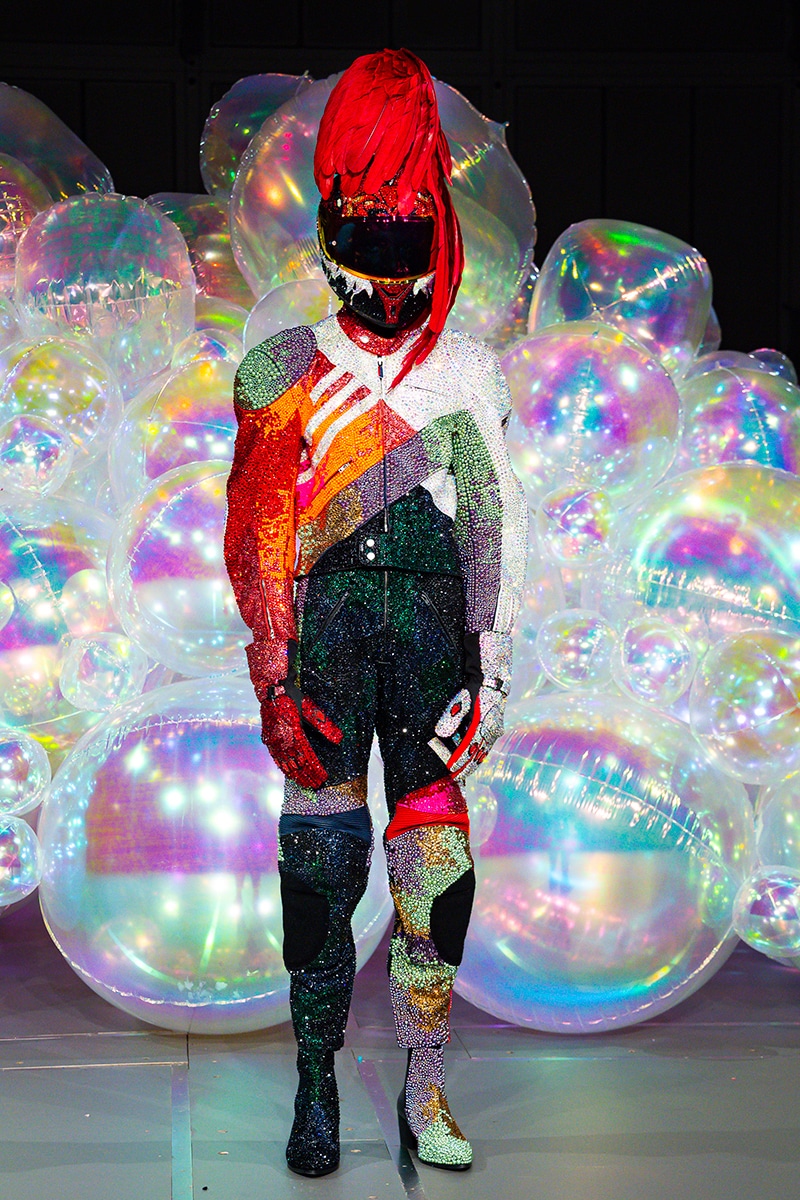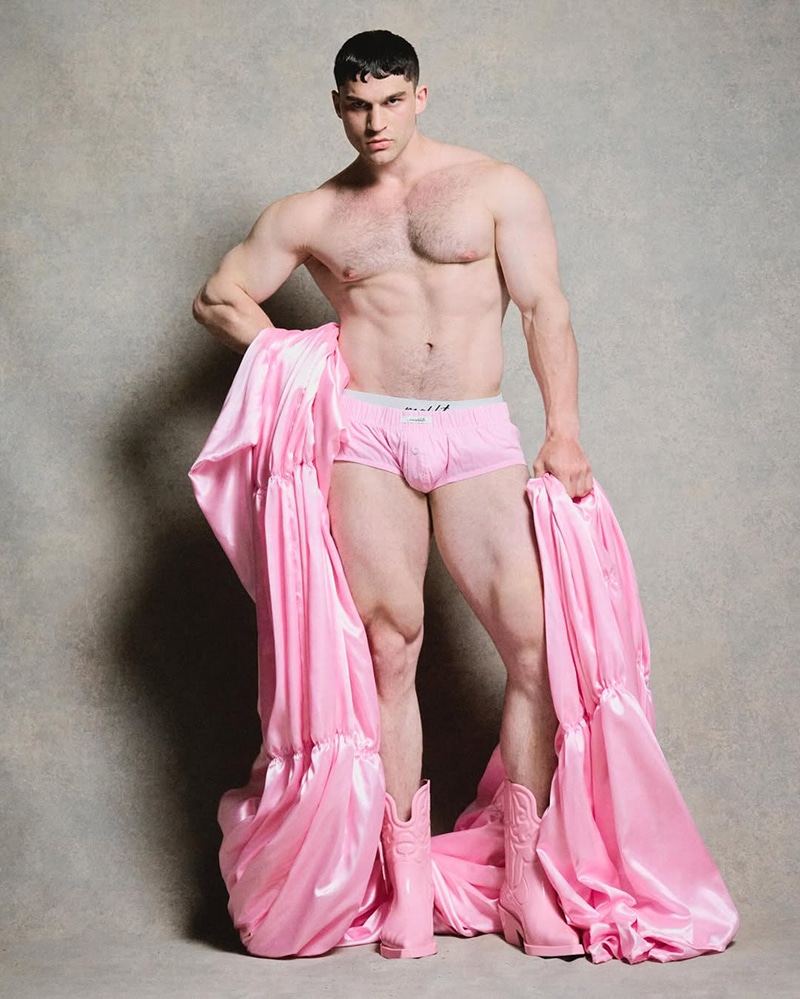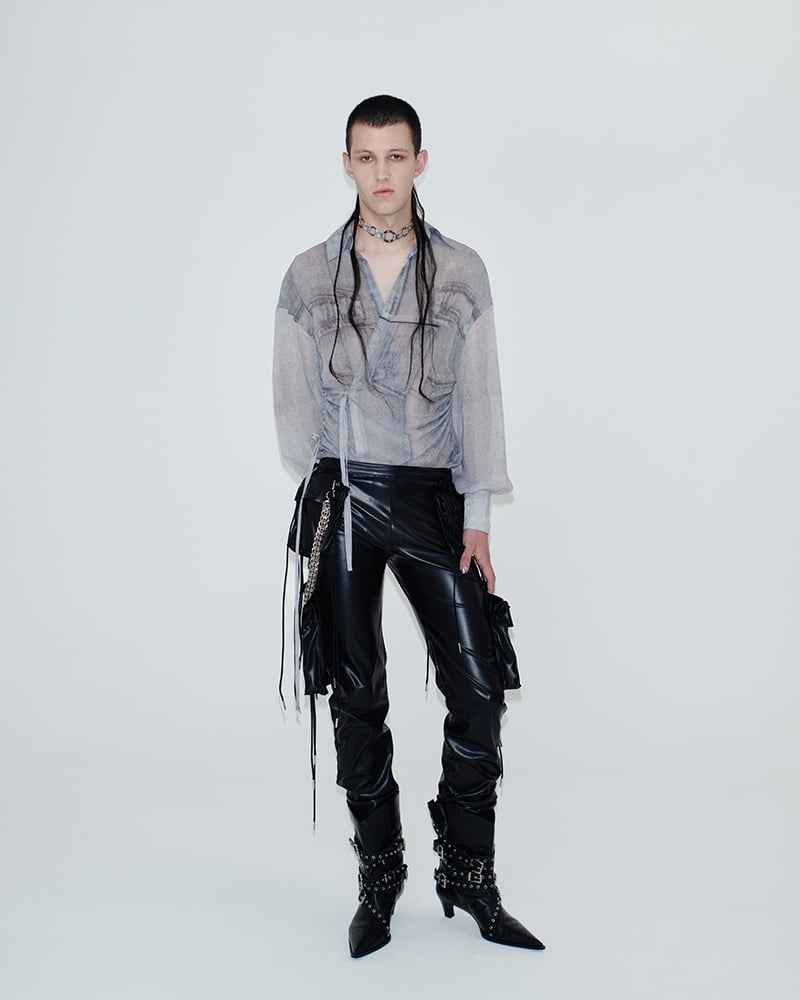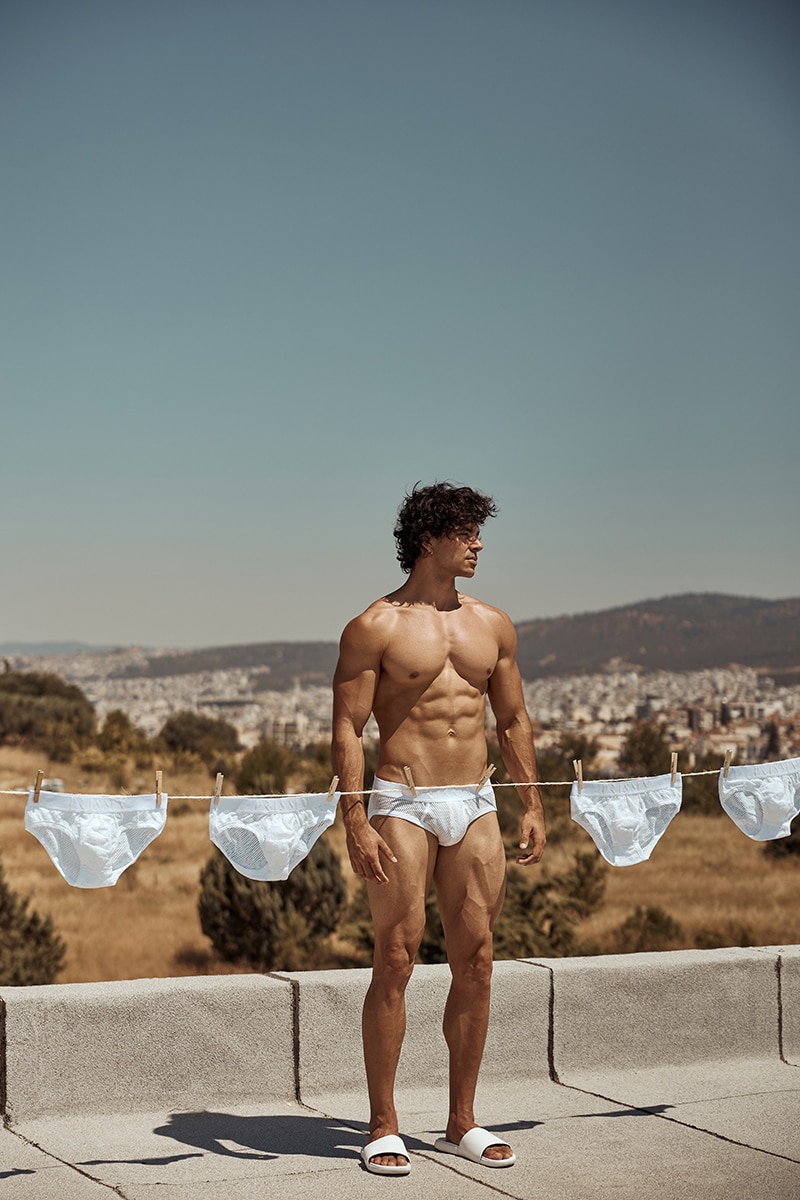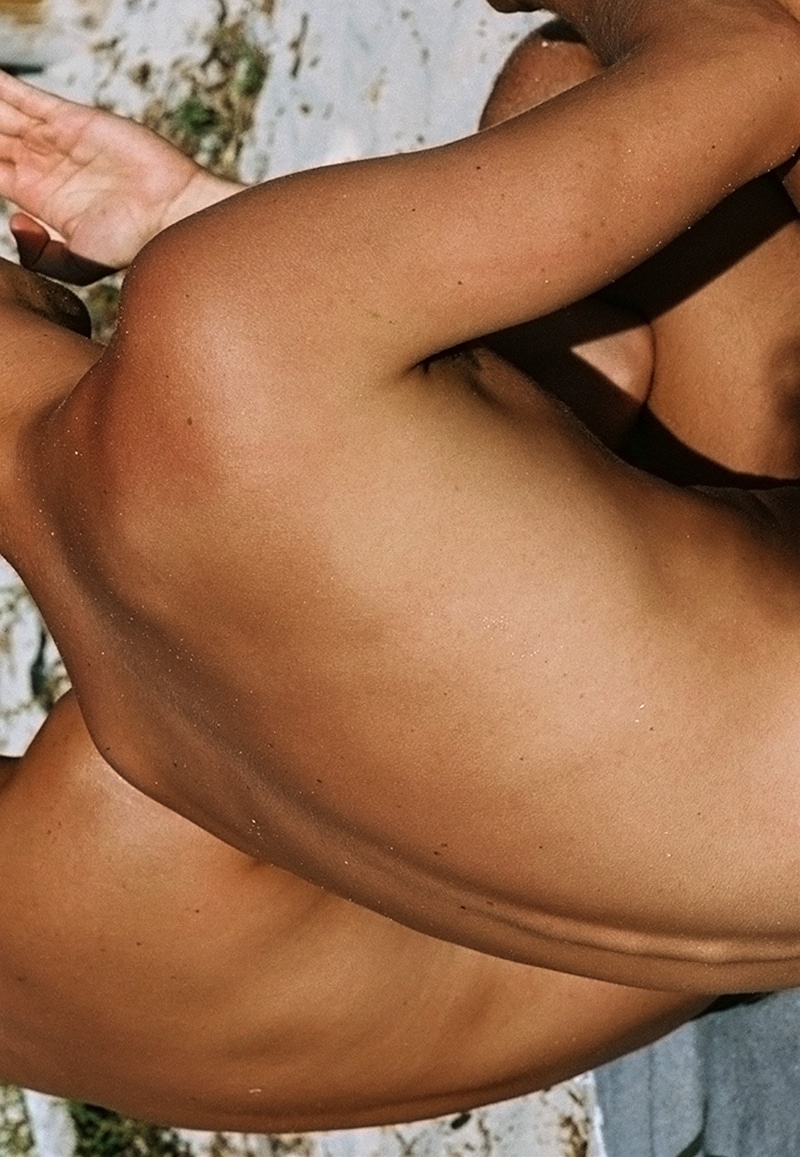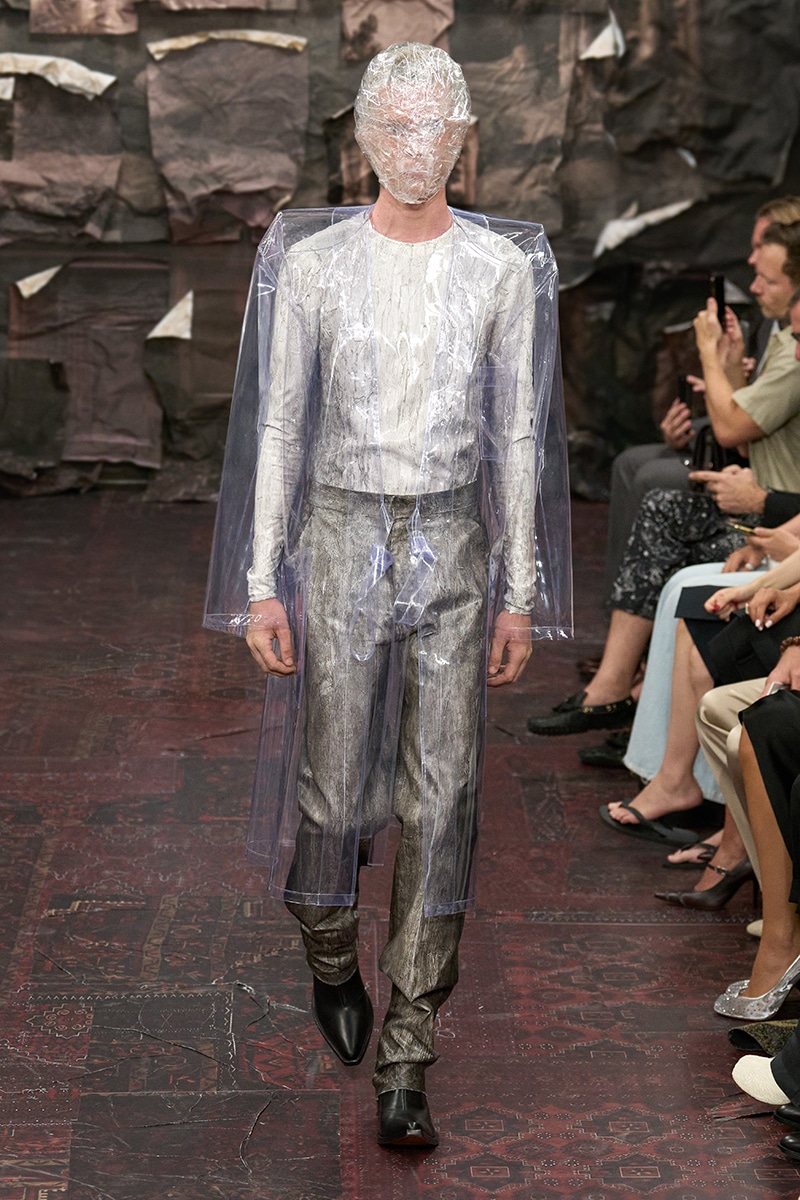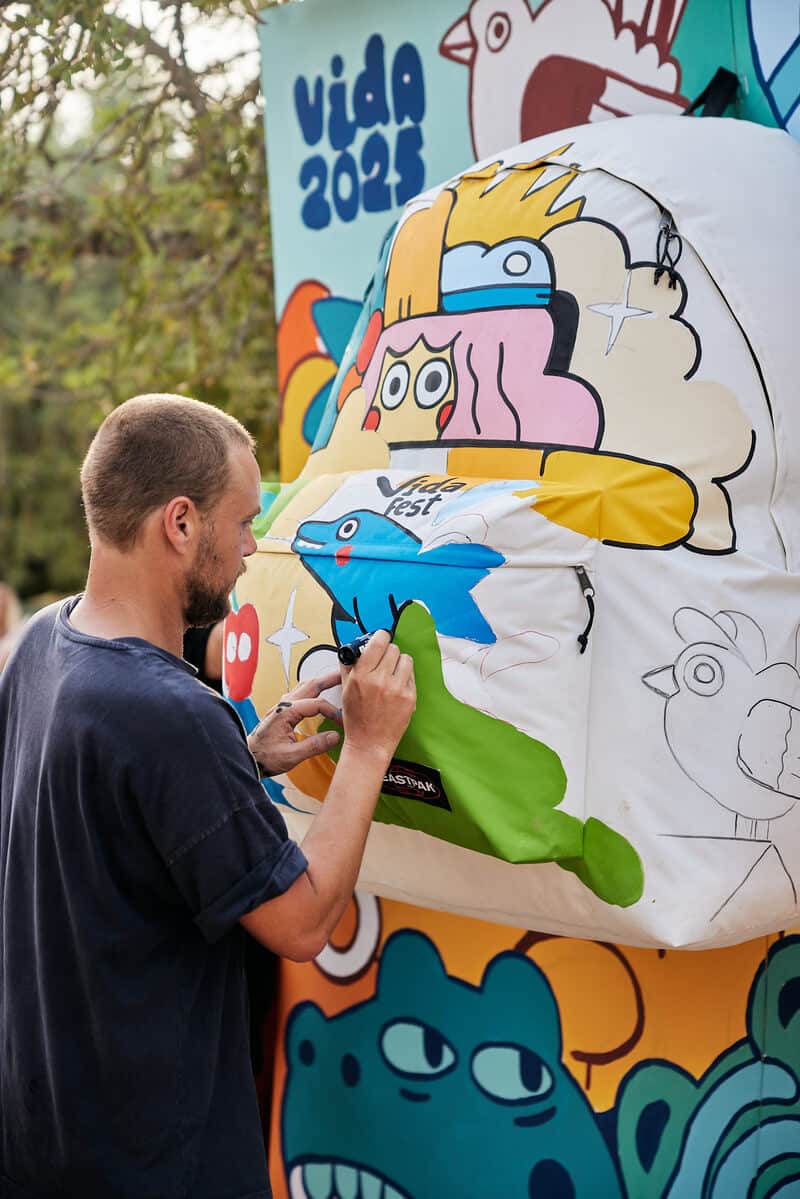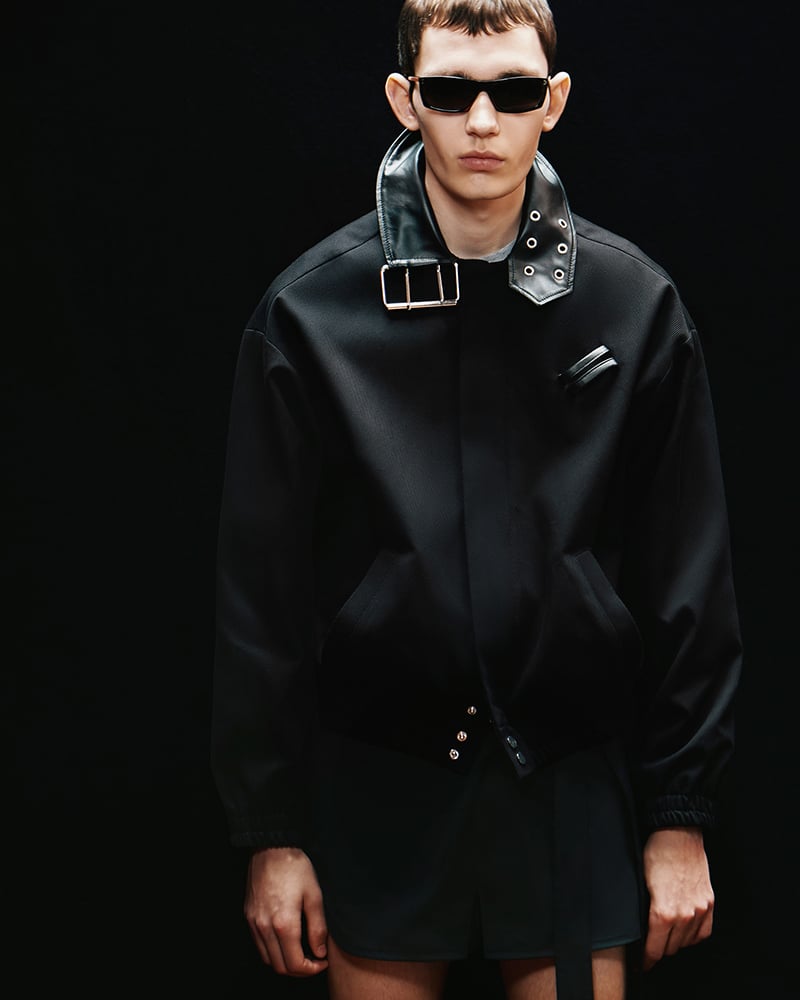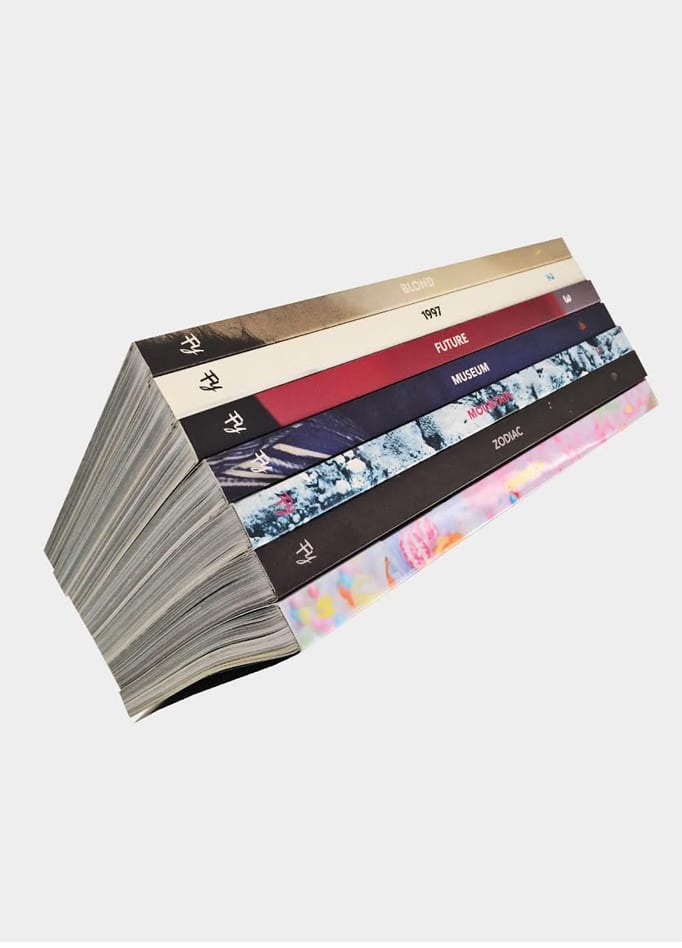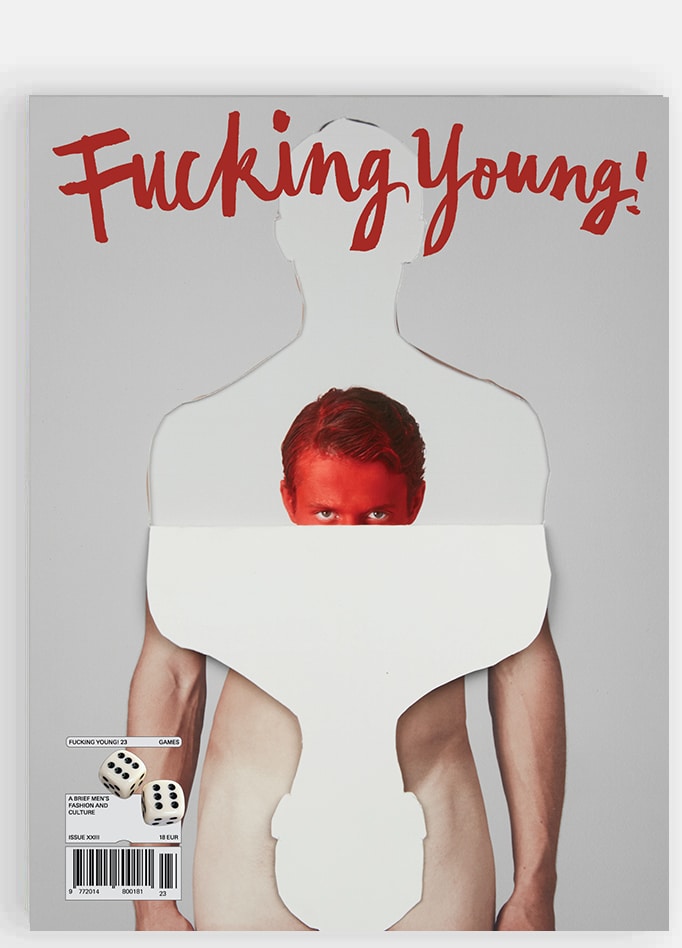
A fixture on the Parisian fashion and party scenes, Vincent Frédéric Colombo has made a name for himself first by working at the hip KTZ store in the 2010s, then by throwing the cult La Creole parties, which promote Caribbean sounds, DJing as MYSTERIOUS SK1N (He performed at parties for brands like Jacquemus and Off-White) and then by launching his brand, C.R.E.O.L.E, an enticing mixture of sportswear, underwear, and tailoring, with a queer sensibility and a focus on creole Identity. Now showing on the official Paris men’s fashion week calendar, the designer has attracted a clientele of young men, who are particularly fond of his colorful, body-revealing underwear and swimwear.
After shooting some of his pieces around a pool in Abidjan, Ivory Coast, we had a chat with the up-and-coming designer in Paris.

Can you please tell us about your background?
I’m 33. I was born in Paris, and I grew up in Guadeloupe until the age of 18. I moved to France to study product design, sociology, and anthropology. Then I studied fashion design at the HEAD school in Geneva.
I’m the creative director of my brand C.R.E.O.L.E, but also the co-founder of the LA CREOLE party collective, a casting director, DJ, and radio host, among other things.
How did the idea for the brand come about?
Mainly, out of frustration. Growing up with little representation, and French people showing little interest in what’s going on on our island. They only see it as an exotic resort.
But Guadeloupe is more than just about beautiful landscapes. We have a specific language, a sense of fashion, music, party and celebration – look at our carnival. Growing up, I found a balance between my queer identity, my work, society, and the industry, but I also discovered the hurdles that people with a background similar to mine have to face.

Your project had been many years in the making. Can you tell us why?
My project took years to make because I’m a self-made man. I started by doing editorial projects as a stylist with photographers Enzo Addi and Fanny Viguier. With the latter, I created this creative duo and this manifesto project CREOLE SOUL, before launching the LA CREOLE party/collective in 2018. It took me years to have a clear vision. A brand is more than just about good garments and design. It’s an emotional experience from the designer to the customer. You have to do it for the right reasons. Authenticity is key.
What is specific about the Caribbean style?
Caribbean style is colorful, with a lot of patterns inspired by tartan. Our folkloric style is a heritage of European garments with symbolic details of resilience from slavery.
Contemporary creole style comes from all the pan-African movements, Jamaica, and the United States. It’s about corporate clothing, color blocks, workwear, beachwear, fishnet, skinny or oversize, and gold jewelry. It goes from ratchet to overdressed through conservative.

Your work always melds intricately detailed outfits and sportswear. Can you please explain why this mixture is important to you?
I tend to develop some obsessions for certain techniques, which I always try to use in an unexpected way. I see some of my designs like show pieces for fashion museums or collectors. It’s important for an emerging designer to show that they can challenge the ateliers.
There is always a strong eroticism in your work. Can you please explain why this element is important to you?
I worked for several years as a casting director for Bernhard Willhelm. I feel lucky, because he’s a genius and has inspired a lot of designers, including me. I also tend to collaborate with designers and artists who have a sense of kinkiness and playfulness. Thomas Pierre Jean, Soft Shade and Yann Dechambre have all crafted pieces for C.R.E.O.L.E. Adding eroticism to my work gives a sort of power to the customer, who wants to feel special on certain occasions. I’ve actually started shooting models for my content, and there’s often something erotic about the images.

You also have a very specific taste in models. Can you please tell us more about it?
I’ve learned to appreciate different beauty types, as all communities can be found in Guadeloupe.
I’ve also been inspired by castings by such brands as Garragán, Willy Chavarria, Nasir Mazar, Astrid Anderson, Hood By Air, KTZ, Givenchy by Ricardo Tisci, Gypsy Sport, Sadak Label, Raf Simons, Rick Owens.
With my castings, I celebrate different communities, and I also question notions of masculinity, femininity, and queerness.

Your fishnet tank tops are a hit. Can you please tell us the story behind them?
The fishnet or “English string vest” is maybe one of the more iconic Caribbean items, worn by all generations. It is useful for isolation in winter and is perfect for ventilation during summer. It’s an absolute must-have.
When I found out that tie-and-dye wasn’t commonly used on fishnet tank tops, I started experimenting with it. As a result, every single piece is unique, done by hand.

You have multiple activities on the Paris scene. Does that influence your work?
My work is a soft-power manifesto to celebrate Afro, Latino, and Caribbean contribution, and clothes are part of the equation. I try to express myself through different media. Connecting with human beings is important to me, as is sharing experiences.

What are your next projects?
I’m now part of the official calendar of Paris Fashion week, and I have a showroom at Sphère. I want to grow my brand and hopefully make it as successful as such brands as Casablanca, Off-White, Ami or Jacquemus. And also, why not, become the creative director of a big brand or collaborate with other brands and artists. I also want to open doors to other people.
The sky is the limit.

